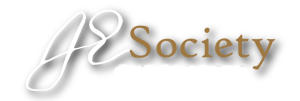Here’s some great advice regarding Digital Humanities from a 2017 interview with Ken Minkema:
Continue to acquaint yourselves with the latest advances and applications in digital humanities. I was a member of that transitional generation that, in less than two decades, went from paper and pen to manual typewriter to electric typewriter to computer, so understanding the digital world did not come naturally. But now it is not only vital for superior teaching and personal research, but provides the basis for being flexible and adaptable. With this foundation, one can teach in various settings whether onsite or online, or work in public history capacities, in libraries and museums, in historical editions, in advocacy, in philanthropy, and so forth.
https://earlyamericanists.com/2017/06/01/where-historians-work-kenneth-minkema/
I would add to this — be “flexible and adaptable” and able to create code that solves problems and eases entry for readers into large and complex corpora like The Works of Jonathan Edwards and Early Church Fathers. The video below demonstrates the Quickview feature of Visual Edwards software and how one can start exploring a single passage of WJE and extend it to the larger corpus (and even compare with Augustine and the other Fathers).
Quickview Workflow
- Copy text from WJEO web page
- Summarize with Quickview (without terms in highlight box)
- Examine summary and select terms for Quickview (if needed, adjust summary length and run Quickview again)
- Enter key terms in highlight box and run Quickview again
- Look for strong and weak connections in Quickview visualization
- (Optional) with WJEO page link and terms, run WJE Keyword Pairs
- Build full visualization of WJE 1-26 based on Quickview / Keyword Pairs results
